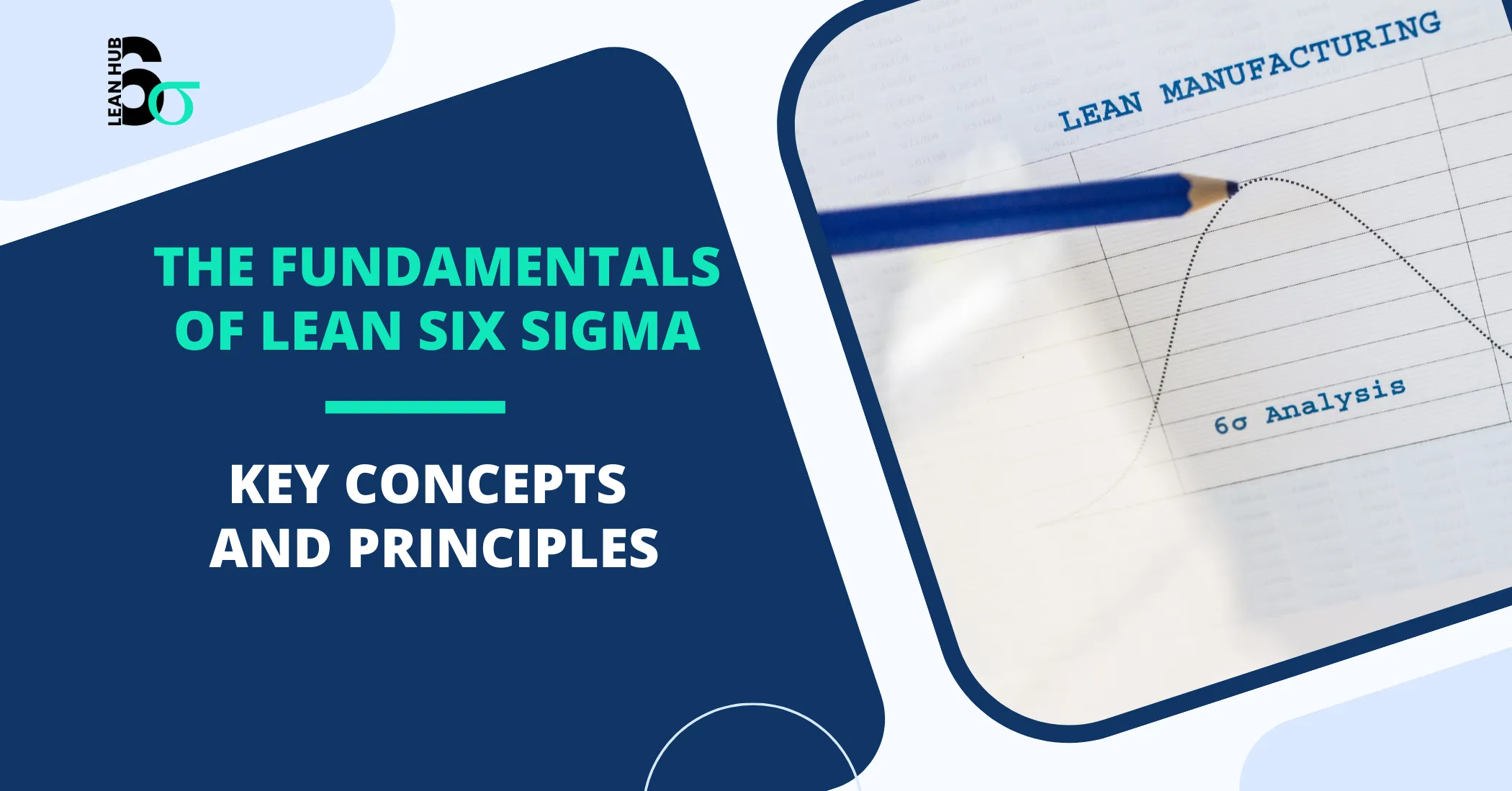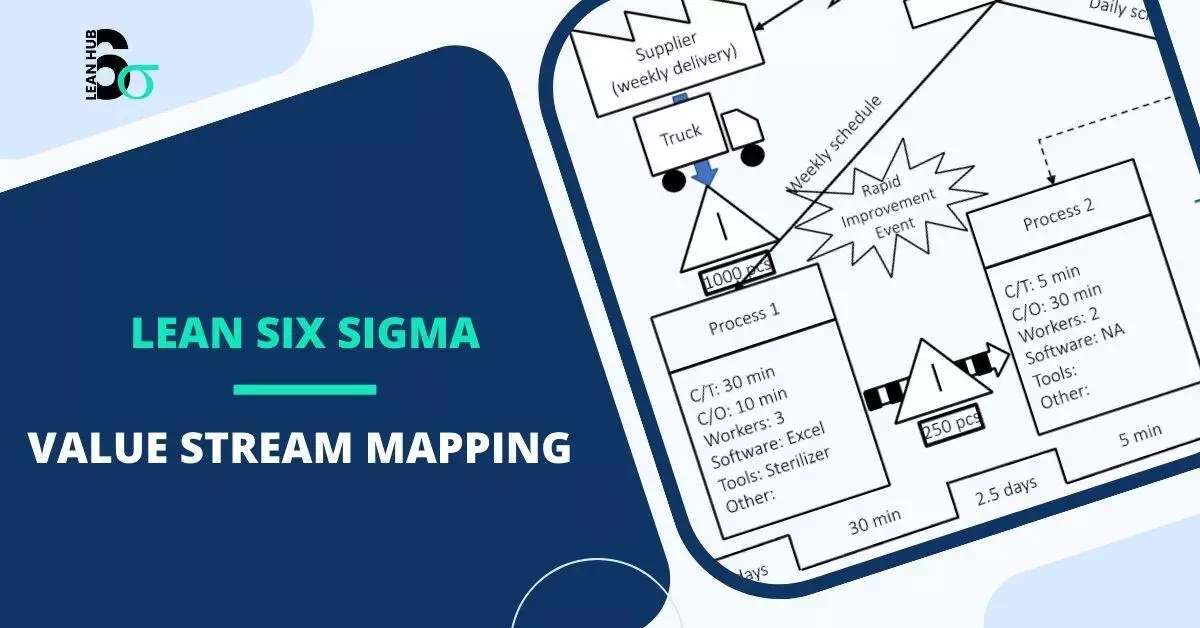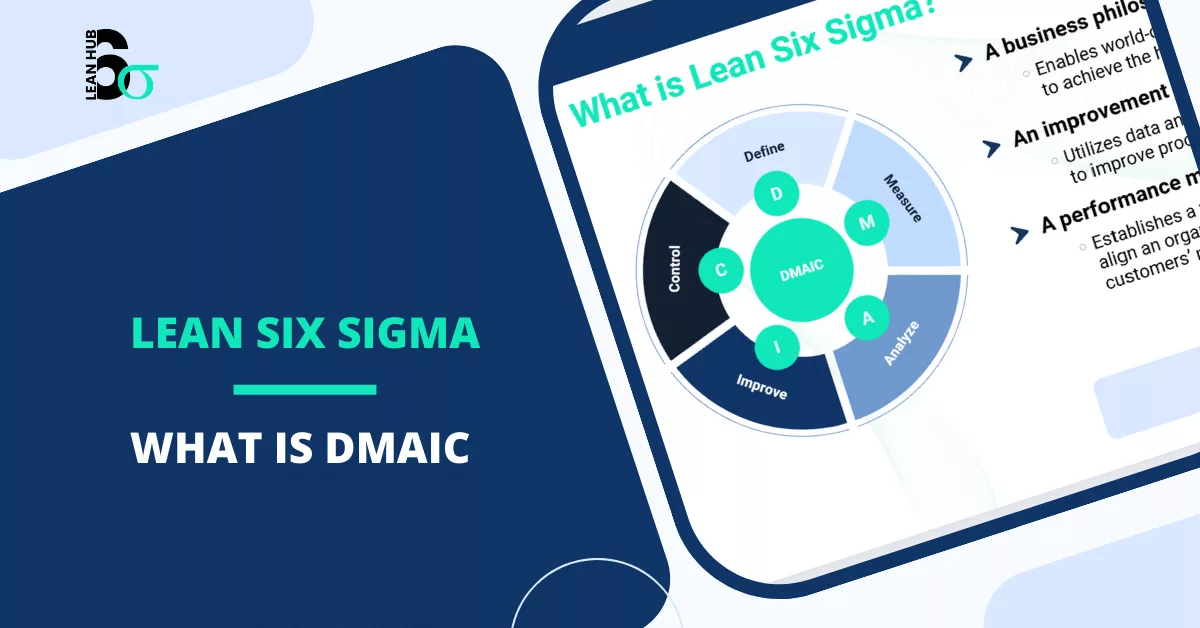Introduction to Lean Six Sigma
Lean Six Sigma is a powerful methodology that synergizes Lean manufacturing techniques with Six Sigma principles to enhance efficiency and minimize defects. This hybrid approach was conceptualized to offer a comprehensive framework for organizations striving to refine their processes, thereby driving both quality and cost-effectiveness. The concept essentially amalgamates Lean methods, which streamline operations by eradicating waste, with the data-driven Six Sigma, which focuses on reducing variability and achieving near-perfection in quality.
Tracing back to its roots, Lean Six Sigma emerged from two distinct but complementary philosophies. Lean manufacturing has its origins in the Toyota Production System developed in the mid-20th century, emphasizing waste minimization and process improvement through systematic problem-solving approaches. In contrast, Six Sigma was developed at Motorola in the 1980s, advocating for a rigorous analytical methodology to reduce defects and variability, such that processes are improved to a level where they produce no more than 3.4 defects per million opportunities.
Over the years, Lean Six Sigma has evolved beyond its manufacturing origins, significantly impacting various sectors such as healthcare, finance, and information technology. Its broad appeal stems from its versatility in problem-solving and process optimization, making it relevant and applicable across diverse organizational contexts. As businesses seek to remain competitive in increasingly challenging markets, adopting Lean Six Sigma methodologies allows them to cultivate a culture of continuous improvement and operational excellence.
Whether it’s reducing cycle times, improving customer satisfaction, or driving cost savings, the principles of Lean Six Sigma empower organizations with tools and techniques to achieve sustainable success. This cohesive approach ensures that efficiency gains are not merely incremental but substantial, facilitating both short-term improvements and long-term strategic growth.
The Five Phases of Six Sigma (DMAIC)
The DMAIC methodology, central to Six Sigma, comprises five distinct phases: Define, Measure, Analyze, Improve, and Control. Each phase is integral to the process improvement framework, ensuring systematic enhancement of processes while reducing variability and defects. Here, we delve into each phase to elucidate its significance and the tools employed.
Define
The Define phase sets the foundation for the entire DMAIC process. The objective here is to identify the project goals, the scope, and the customer requirements. Defining the problems and processes clearly is crucial. Tools such as Project Charters, SIPOC (Suppliers, Inputs, Process, Outputs, Customers) Diagrams, and Voice of the Customer (VOC) are typically used. For instance, a manufacturing company might use SIPOC to map out supplier inputs affecting product quality.
Measure
In the Measure phase, data collection is the primary focus. This phase aims to quantify the current performance level of the process. Metrics like Defects Per Million Opportunities (DPMO) and Sigma Level are often used. Tools such as Process Maps and Control Charts help visualize performance. An airline, for example, might measure on-time arrival rates to identify inconsistencies.
Analyze
During the Analyze phase, the goal is to identify the root causes of defects and process deviations. This phase involves data analysis to uncover patterns and insights. Techniques such as Root Cause Analysis, Fishbone Diagrams, and Hypothesis Testing are extensively applied. For instance, a retail chain might use Root Cause Analysis to determine why inventory shortages occur.
Improve
The Improve phase focuses on developing and implementing solutions to address the root causes identified in the Analyze phase. Brainstorming sessions, Design of Experiments (DOE), and pilot testing are commonly utilized. For illustration, automotive companies might employ DOE to refine assembly line processes, ensuring uniformity and defect reduction.
Control
The Control phase ensures that the implemented improvements are sustained over time. Establishing control mechanisms like Standard Operating Procedures (SOPs) and ongoing monitoring through Control Charts is essential. An example could be a software development firm instituting code review standards to maintain new quality benchmarks.
Through these five phases, the DMAIC methodology facilities structured problem-solving and continuous process improvement, thereby embodying the core principles of Lean Six Sigma.
The Principles of Lean
Lean is a systematic approach to identifying and eliminating waste through continuous improvement. It operates on five core principles: value, value stream, flow, pull, and perfection. These principles collectively serve to enhance efficiency and reduce waste in processes, aligning resource use closely with customer needs.
Value: The first principle, value, emphasizes creating something the customer is willing to pay for. Value should always be defined from the customer’s perspective and should guide all activities within the organization. Identifying the true value of products or services lays the foundation for the lean methodology.
Value Stream: The value stream is the entire sequence of activities required to design, produce, and deliver a product or service to the customer. Mapping the value stream helps organizations identify areas where wastage, known as ‘Muda’, occurs. Muda includes overproduction, waiting, excess motion, transportation, overprocessing, inventory, and defects, all of which do not add value to the final product.
Flow: Once value has been defined and value streams identified, the next step is ensuring smooth, uninterrupted flow of products, services, or information. Any bottleneck or interruption disrupts this flow, creating waste and inefficiency. Optimizing flow is crucial to reducing delays and increasing the efficiency of processes.
Pull: The pull principle operates on demand-driven processes, ensuring that nothing is produced ahead of time. This approach minimizes excess inventory and overproduction, two significant sources of waste. By producing only what is needed, when it is needed, pull systems tightly align production schedules with actual customer demand.
Perfection: The final principle, perfection, involves relentless pursuit of process improvements. It is about continually refining the first four principles, aiming for zero waste and absolute efficiency. By striving for perfection, organizations not only maintain momentum in waste reduction efforts but also foster a culture of continuous improvement.
The principles of Lean provide a robust framework for enhancing operational efficiency and eliminating waste. By integrating these principles, organizations can significantly improve their value delivery process, ultimately leading to customer satisfaction and competitive advantage.
Value Stream Mapping (VSM) is an essential tool within the Lean Six Sigma methodology. It visually captures the complete process of goods and information as they move through the production system from inception to the final delivery. By focusing on the flow of materials and information, VSM aids in identifying and eliminating waste, thereby increasing overall operational efficiency.
What is Value Stream Mapping?
VSM serves as a visual representation of every step in the process required to deliver a product or service to the consumer. It allows organizations to gain a holistic view of their production cycle, identifying bottlenecks, redundancies, and non-value-added activities. This comprehensive understanding facilitates targeted improvements in areas that have the most significant impact on efficiency and customer satisfaction.
Steps to Create and Interpret a Value Stream Map
The process of creating a Value Stream Map starts with identifying the product or service to be analyzed. The next step involves mapping out the current state of the process by documenting all steps, material flows, and information flows. This often includes observations and data collection on cycle times, wait times, and work-in-process levels.
Once the current state map is complete, the next step is analyzing the map to identify sources of waste and areas for improvement. This might involve highlighting steps that do not add value, which can then be targeted for elimination or improvement. A future state map is then developed, which represents the optimized process flow after proposed changes are implemented.
Interpreting the VSM involves looking at the flow and asking critical questions: Are there delays or bottlenecks? How can communication be streamlined? How can redundant steps be removed? This interpretation helps in crafting a more efficient process by focusing on reducing lead times and enhancing customer value.
In practice, VSM can lead to significant improvements in production time and resource utilization. For example, a manufacturing company might discover through VSM that certain processes could be automated or that reconfiguration of the workflow could reduce transit times between steps, thereby boosting productivity and reducing costs.
Roles and Responsibilities in Lean Six Sigma
In a Lean Six Sigma organization, various roles are distinctly defined to ensure the successful implementation and execution of Six Sigma projects. Each role carries specific responsibilities and requires particular qualifications, contributing uniquely to the overall efficacy of Lean Six Sigma methodologies.
Green Belts: Green Belts play a crucial part in identifying and implementing process improvements within their specific operational areas. Typically, Green Belts spend about 25% of their time on Six Sigma projects. They must possess a thorough understanding of Lean Six Sigma tools and methodologies. Their responsibilities include data collection, project documentation, and working with Black Belts to analyze data and develop strategies. Green Belts are essential for bridging the gap between daily operations and Six Sigma initiatives.
Black Belts: Black Belts are full-time professionals who lead complex Six Sigma projects. They are expected to have extensive training in both Lean Six Sigma principles and statistical analysis. Black Belts mentor Green Belts, apply advanced analytical tools, and drive the project from definition through the control phase. Their deep expertise enables them to manage multiple projects simultaneously, ensuring strategic alignment with organizational goals.
Master Black Belts: The Master Black Belt is primarily a mentor and coach for Black Belts and Green Belts. They possess profound expertise in Six Sigma methodologies and typically have a higher level of strategic influence within the organization. Master Black Belts train other belts, lead enterprise-wide projects, and ensure that Six Sigma initiatives align with broader business objectives. Their role is pivotal in maintaining the standardization and sustainability of Six Sigma practices.
Champions: Champions are typically senior executives who sponsor Six Sigma projects. They ensure that projects align with strategic objectives and provide the resources necessary for success. Champions are responsible for removing barriers, securing management support, and ensuring project results are integrated into the culture of the organization. They act as liaisons between the Six Sigma teams and upper management, guiding the strategic direction of Six Sigma within the enterprise.
Each of these roles—Green Belts, Black Belts, Master Black Belts, and Champions—plays a synergistic part in the Lean Six Sigma framework, ensuring continuous improvement, operational efficiency, and strategic alignment within the organization. Their collaboration and expertise drive the sustainability and success of Six Sigma initiatives across various sectors.
Tools and Techniques Used in Lean Six Sigma
Lean Six Sigma employs an array of tools and techniques to identify inefficiencies and eliminate waste in processes, contributing to overall operational excellence.
The 5S methodology focuses on workplace organization and standardization, involving five steps: Sort, Set in Order, Shine, Standardize, and Sustain. By clearly organizing materials and maintaining cleanliness and orderliness, organizations can improve operational efficiency and ensure safety and quality. For example, in manufacturing, 5S can reduce search time for tools and materials, thereby enhancing productivity.
Kaizen, meaning “continuous improvement,” encourages employees at all levels to identify areas for improvement on an ongoing basis. This technique leverages small incremental changes that collectively lead to significant improvements over time. In a service environment, Kaizen might involve streamlining customer service processes to reduce response times.
Kanban, a scheduling system for lean and just-in-time production, relies on visual cues to signal when to produce or restock items. Flexible and adaptable, Kanban can significantly reduce inventory costs and increase workflow efficiency. For example, in software development, Kanban boards are frequently used to visualize work stages, enhancing project transparency and managing workloads.
Poka-Yoke, or “mistake-proofing,” employs mechanisms to prevent errors before they occur or detect them instantly. By integrating Poka-Yoke, industries can significantly reduce defect rates. For instance, in assembly operations, a Poka-Yoke device might be used to ensure that components are assembled correctly, thereby preventing costly rework.
Root Cause Analysis (RCA) focuses on identifying the underlying causes of problems. By targeting the root cause rather than treating symptoms, organizations can develop effective corrective actions. Techniques like the 5 Whys or Fishbone Diagram are commonly used in RCA to systematically explore cause-and-effect relationships within processes. Industries ranging from healthcare to automotive manufacturing rely on RCA to address issues such as equipment failure or process deviations.
Statistical Process Control (SPC) employs statistical methods to monitor and control processes, ensuring that they operate at their fullest potential. By analyzing data and identifying variations, SPC helps businesses maintain consistent quality standards. Manufacturing industries frequently use control charts and other SPC tools to detect process fluctuations, ensuring products meet stringent quality metrics.
Benefits and Challenges of Implementing Lean Six Sigma
Implementing Lean Six Sigma offers numerous benefits that can significantly enhance organizational performance. One of the primary advantages is increased efficiency. By identifying and eliminating waste through systematic process improvements, organizations can streamline operations, reduce cycle times, and enhance productivity. This heightened efficiency not only cuts costs but also enables businesses to compete more effectively in their respective markets.
Another key benefit is the reduction of waste. Lean Six Sigma methodologies focus on minimizing non-value-added activities, such as overproduction, waiting times, and defects. By doing so, companies can reduce operational costs and improve their bottom line. This waste reduction aspect is pivotal to achieving and sustaining lean operations across various industries.
Improved quality is also a significant outcome of Lean Six Sigma implementation. By following data-driven decision-making processes and applying rigorous quality control measures, organizations can enhance their product and service offerings. This leads to fewer defects, increased reliability, and greater customer satisfaction. As a result, businesses often see higher levels of customer loyalty and fewer returns or complaints.
Despite the clear benefits, implementing Lean Six Sigma comes with its set of challenges. One major obstacle is resistance to change within the organization. Employees and management may be hesitant to adopt new processes, fearing the unknown or disruption to established workflows. Overcoming this resistance requires strong leadership, clear communication, and the involvement of all stakeholders in the change process.
The need for training and cultural shifts is another challenge. Lean Six Sigma demands a deep understanding of its principles and tools, which necessitates extensive training programs. Organizations must invest in educating their workforce and fostering a culture that embraces continuous improvement and problem-solving. This shift in mindset can be difficult but is crucial for the successful implementation of Lean Six Sigma.
To mitigate these challenges, strategies such as ongoing support, incremental implementation, and setting realistic goals can be employed. By providing continuous training, encouraging open communication, and celebrating small wins, organizations can create a conducive environment for Lean Six Sigma to thrive.
Case Studies and Success Stories
Lean Six Sigma methodologies have proved beneficial across various industries, enhancing productivity and ensuring quality improvement. One fundamental principle is the identification and elimination of waste, which was notably exemplified in the case of a leading automotive manufacturer. Faced with extensive production delays and growing customer dissatisfaction, the company adopted Lean Six Sigma tools, specifically the DMAIC (Define, Measure, Analyze, Improve, Control) process. Within 12 months, they observed a 30% reduction in production time and a significant increase in customer satisfaction scores. This improvement was achieved by identifying bottlenecks in the assembly line and eliminating non-value-adding activities.
In the healthcare sector, Lean Six Sigma facilitated notable improvements in a hospital’s emergency department. The hospital struggled with long patient wait times and inefficient resource utilization. By applying Value Stream Mapping (VSM) and root cause analysis, the hospital streamlined patient flow and reduced average wait times by 50%. This achievement not only enhanced patient care but also optimized staff allocation, resulting in cost savings and better overall departmental performance.
Another prominent example is in the financial services industry, where a major bank sought to boost its loan processing efficiency. Implementing Lean Six Sigma methodologies, the bank utilized the 5S (Sort, Set in order, Shine, Standardize, Sustain) practice to organize and manage workflow effectively. As a result, loan processing time was cut down by 40%, leading to faster approvals and customer satisfaction. Additionally, the Six Sigma approach helped in reducing errors in loan documentation, further refining the quality of service offered.
Lastly, a case study from the manufacturing sector highlights a food processing plant grappling with high levels of defective goods. By integrating Six Sigma’s statistical tools, including Control Charts and Pareto analysis, the plant dramatically reduced defects by 45%. This led to lower waste, decreased costs, and improved product quality, ensuring better alignment with consumer expectations.
These case studies underline the versatility and effectiveness of Lean Six Sigma across diverse sectors. By focusing on problem-solving through meticulous data analysis and consistent process improvement, Lean Six Sigma enables organizations to achieve tangible, impactful outcomes.








